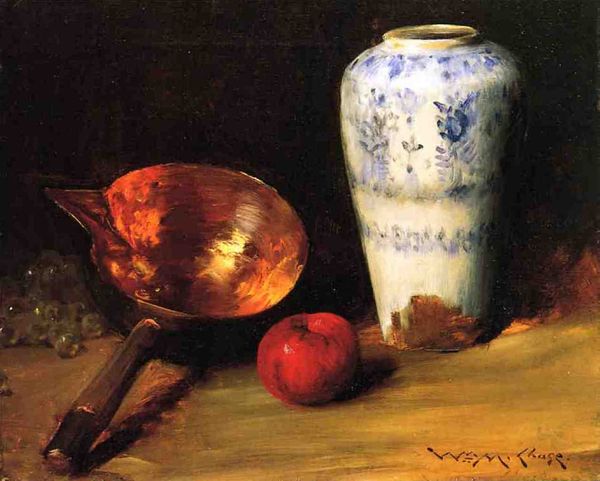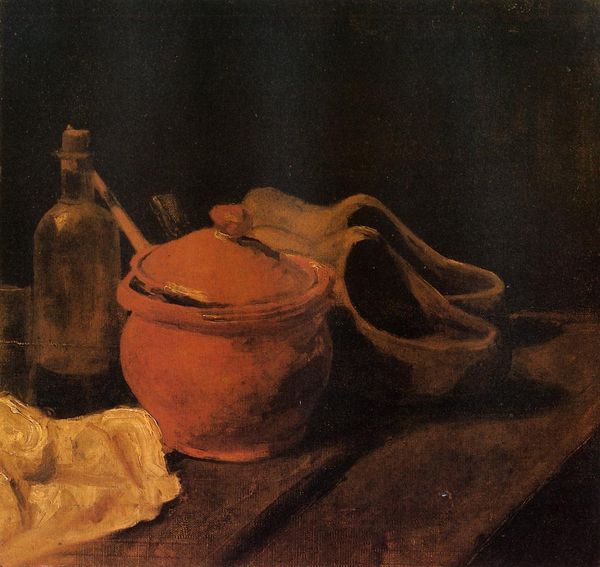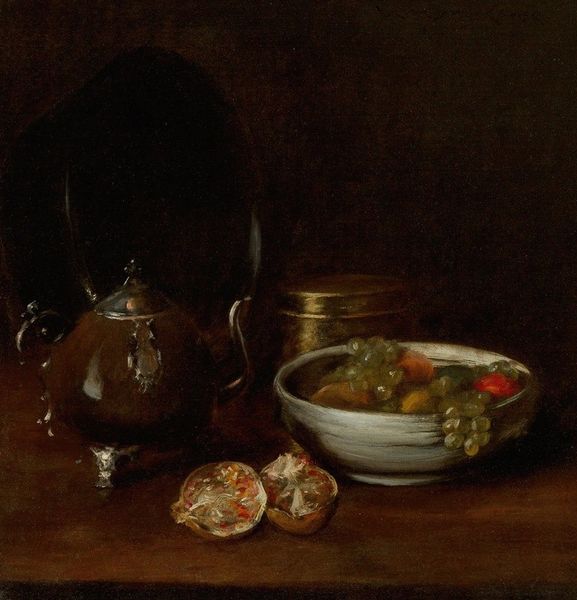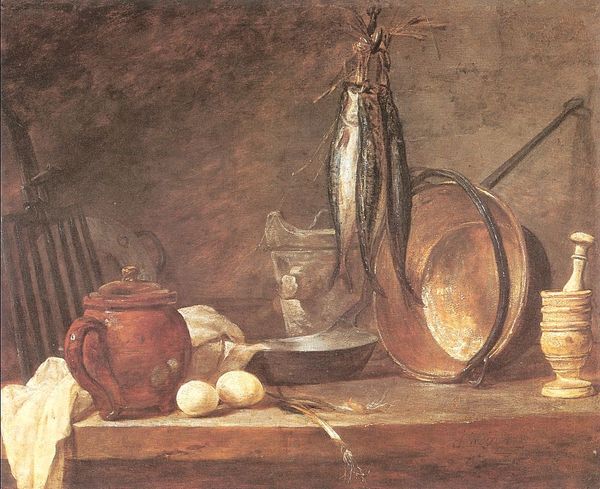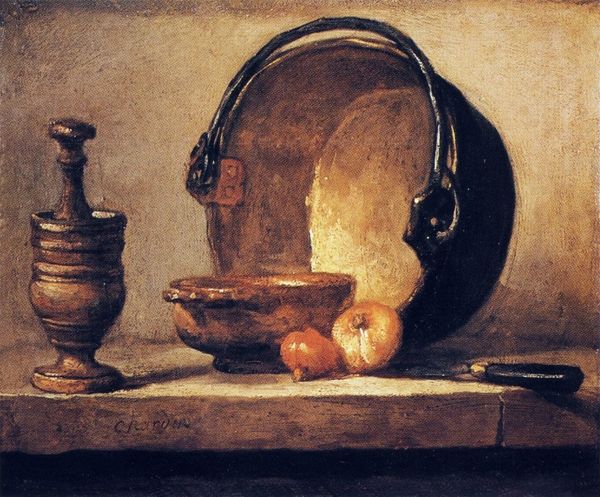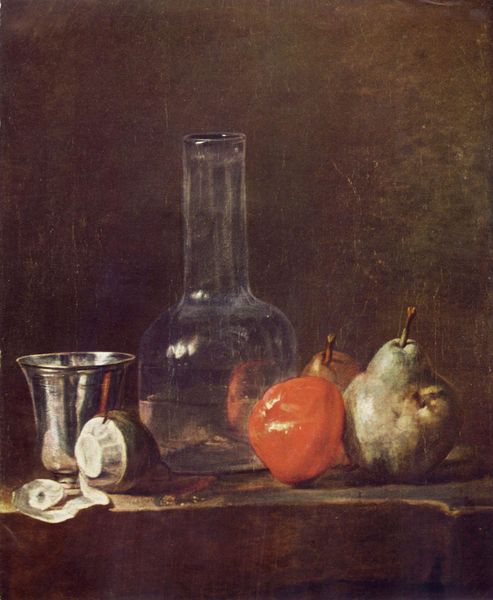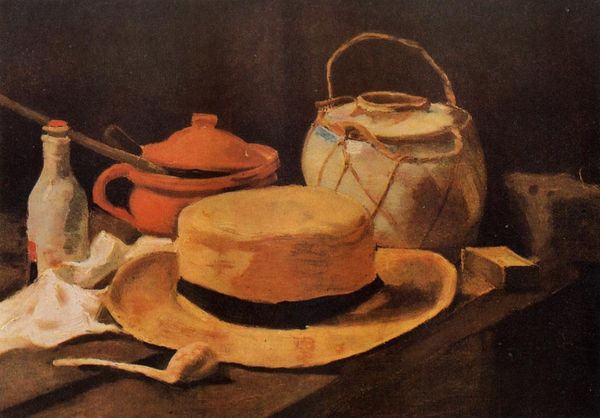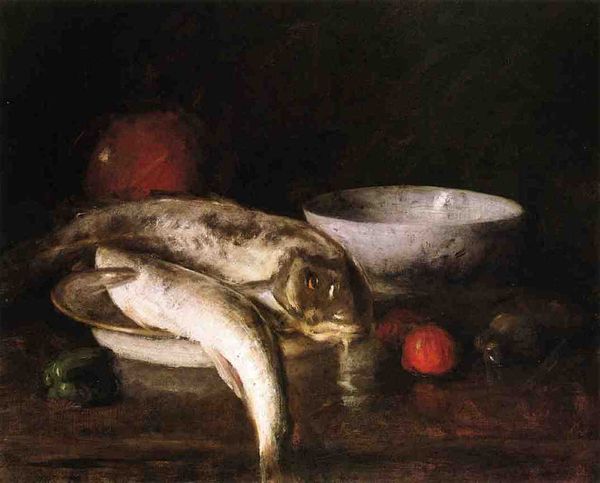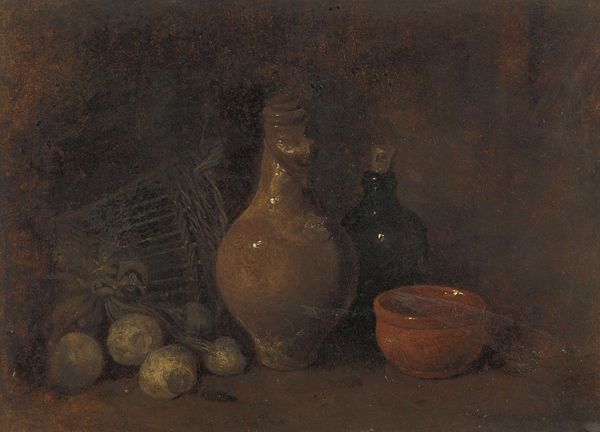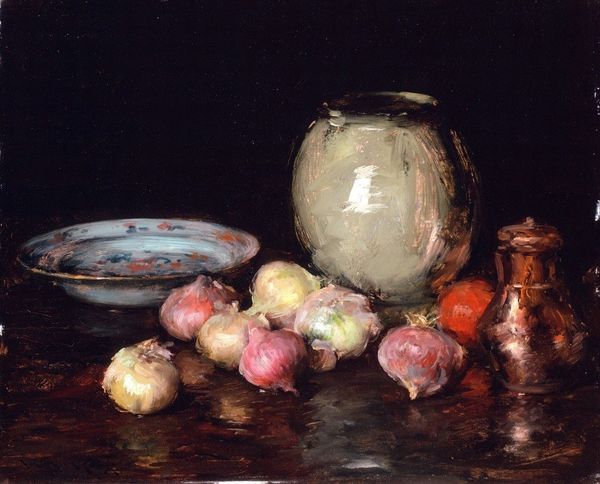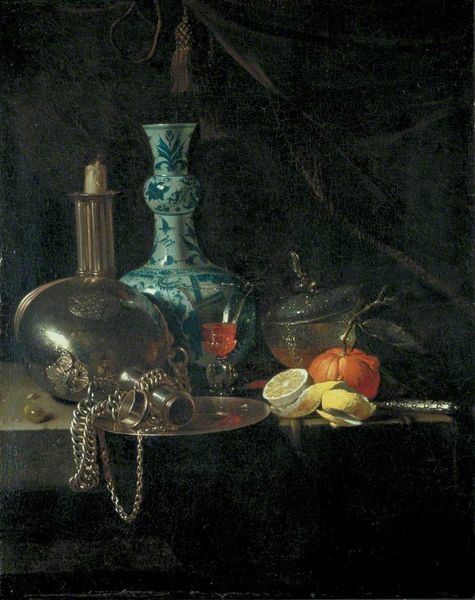
painting, oil-paint, photography, impasto
#
still-life
#
painting
#
oil-paint
#
photography
#
oil painting
#
impasto
#
genre-painting
#
realism
Dimensions: 44.77 x 59.69 cm
Copyright: Public domain
Editor: "Still Life with Pepper and Carrot," created around 1900 by William Merritt Chase. I am immediately drawn to the contrast of the dark, moody background with the vibrant colors of the vegetables. It's also interesting that Chase, known for his portraits, painted a humble scene such as this. What strikes you most about this painting? Curator: Oh, I love this little vignette. The painting’s simplicity belies Chase's incredible skill. Notice how the impasto technique, thick globs of paint, gives a shimmer to the metallic objects like the ladle? The composition makes me think of quiet domesticity, like a brief pause in the day's preparations, doesn't it? I'm reminded of Dutch Masters and their still lifes, celebrating everyday objects with such care. Does it evoke a similar feeling for you? Editor: Absolutely. I think the dark background intensifies the focus on the foreground objects. Is the metallic shine the only detail breaking from the traditional realism in the rest of the artwork? Curator: Not at all, think about what the placement implies. Why is the bowl overflowing? How is he challenging us? I wouldn't limit it to purely "realism"; I feel it teases the line of what a genre piece truly is, no? Chase, in my view, has something quite tongue-in-cheek to show us! And look again: there's a little pot there, not traditionally found among vegetable pieces. Did we ever find out the pepper’s destiny? It gives an entirely other sense. Editor: Interesting! I didn't quite catch all that at first glance. Now that you point out those less conventional decisions, the "realistic" genre of still life indeed becomes more complex and suggestive! I guess still life is never *just* still life. Curator: Precisely. That little pot makes me believe Chase added humor, not just color and glow. Thank you for spotting these little touches that make Chase, well... Chase!
Comments
No comments
Be the first to comment and join the conversation on the ultimate creative platform.
